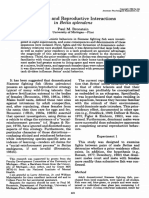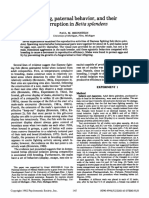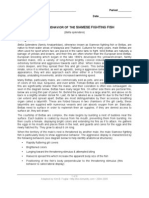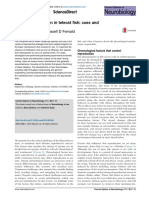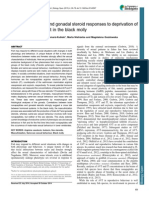0% found this document useful (0 votes)
41 views8 pagesElcoro 2008
The document describes experiments examining whether mirror images can reinforce operant responses in female Siamese fighting fish (Betta splendens), as they do in males of the species. Four experiments were conducted using an apparatus that recorded ring swimming in female Bettas. Mirror presentations were used to reinforce ring swimming under various schedules. As in males, ring swimming was acquired and maintained when mirror presentations immediately or delayed reinforced responses. Conventional extinction and response-independent mirrors failed to maintain responding, confirming the reinforcing properties of mirrors.
Uploaded by
Moko NugrohoCopyright
© © All Rights Reserved
We take content rights seriously. If you suspect this is your content, claim it here.
Available Formats
Download as PDF, TXT or read online on Scribd
0% found this document useful (0 votes)
41 views8 pagesElcoro 2008
The document describes experiments examining whether mirror images can reinforce operant responses in female Siamese fighting fish (Betta splendens), as they do in males of the species. Four experiments were conducted using an apparatus that recorded ring swimming in female Bettas. Mirror presentations were used to reinforce ring swimming under various schedules. As in males, ring swimming was acquired and maintained when mirror presentations immediately or delayed reinforced responses. Conventional extinction and response-independent mirrors failed to maintain responding, confirming the reinforcing properties of mirrors.
Uploaded by
Moko NugrohoCopyright
© © All Rights Reserved
We take content rights seriously. If you suspect this is your content, claim it here.
Available Formats
Download as PDF, TXT or read online on Scribd
/ 8


